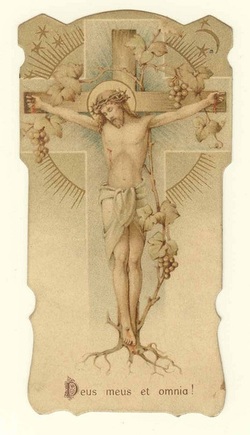
Until very recent times Good Friday was a day of strict fasting, and many people alive now can remember that as children they were allowed no milk and no butter. This, however, was mild in comparison with the fasts of their grandparents.
Today, when fasting in Lent has been, nearly abolished, one could still make some sacrifice. One of Christ's sufferings on the cross was that of thirst; we could all go without drinking anything on this day; or we could sacrifice one meal. But one has to realize that any outward thing like fasting has to be equaled by an attempt at interior fasting from deliberate failings or imperfections; otherwise it is simply hypocrisy.
THE WAY OF THE CROSS
It was a Spanish Dominican who first set up in his Church pictures of Christ's journey to Calvary and who thus began one of the most popular practices of the Church and one which most people follow in Lent and Holy week, even if erratically.
To make the way of the cross pictures are not essential it is only the wooden crosses over the pictures that are necessary. Not only are pictures unessential but so are any set prayers, such as the our Father, Hail Mary and Gloria commonly said at each station. The essence of the practice lies simply in uniting yourself with Christ in his passion, pondering on all that took place on the road to Calvary, and on moving from one station to the next as you do so. This is not so difficult. The devotion is not meant to be a pious lamentation nor an emotional wallowing. One can think how Mary and the apostles must have made the way of the cross after Christ's death. Their little pilgrimage must have been simplicity itself, the silence hardly broken "here is where he fell...here is where Simon helped him...here is where he died." That is the way to make the stations, simply, directly and without much speaking.
It can even become a joyful devotion. There is the true story of the Passionist lay brother who always made the stations on Easter Sunday. Asked why he continued such an essentially Lenten practice into the joyful time of Easter, he said simply "I think of each station and all that happened, and then I say to our Lord, 'Now all that is over, now you are happy.'"
- A Candle is Lighted, Imprimatur 1945 -


 RSS Feed
RSS Feed